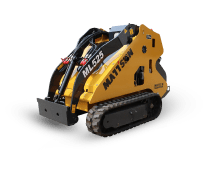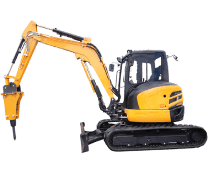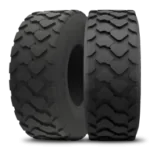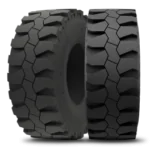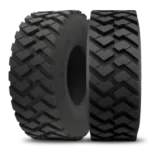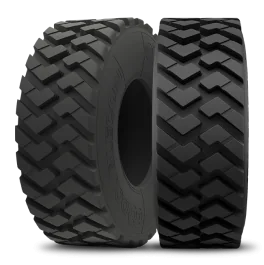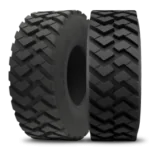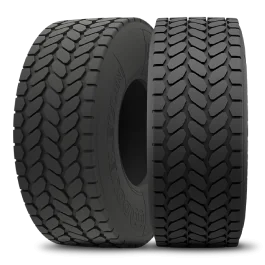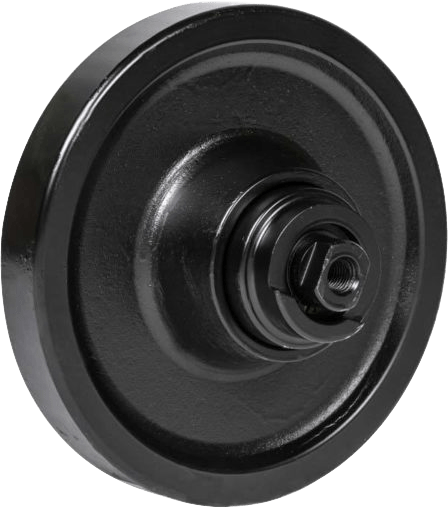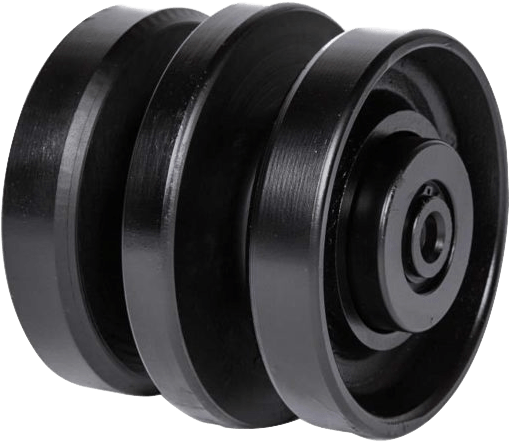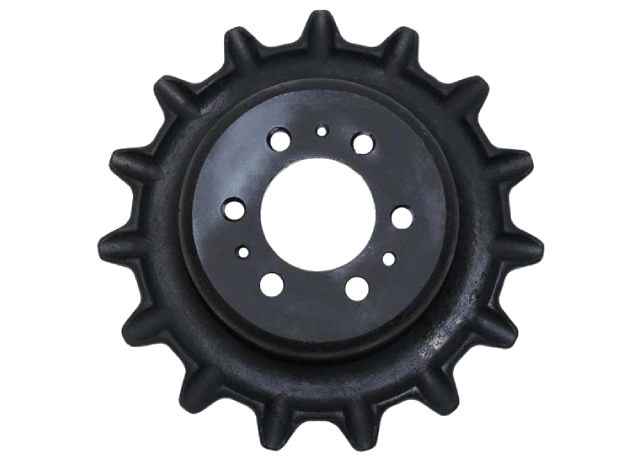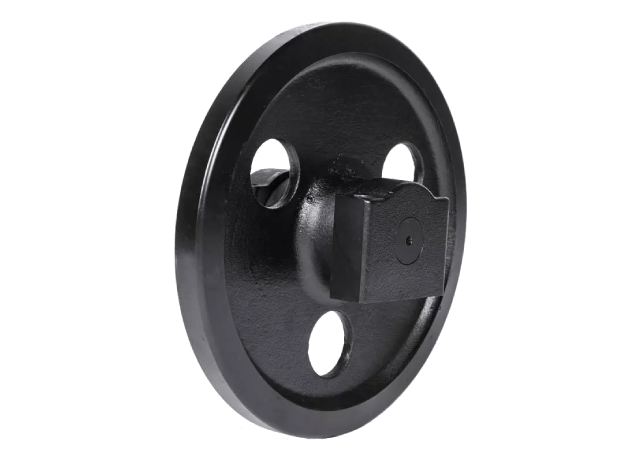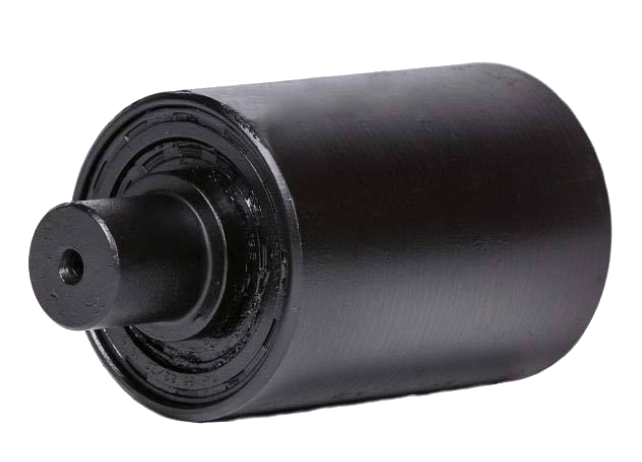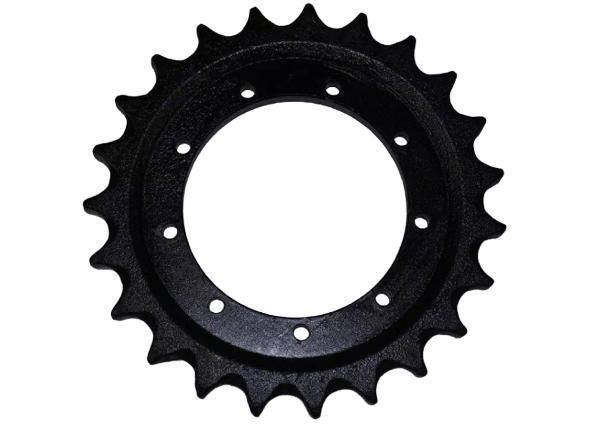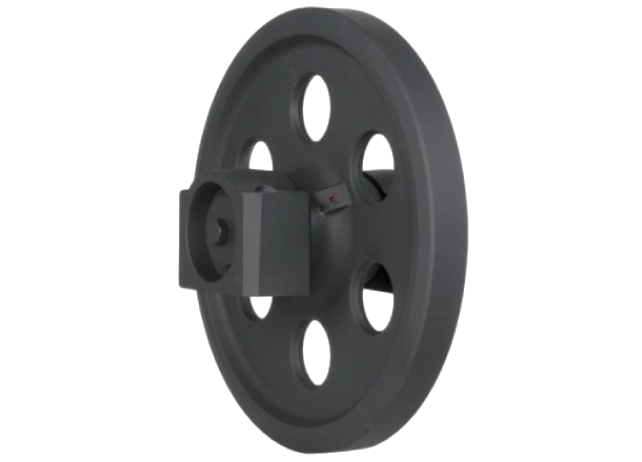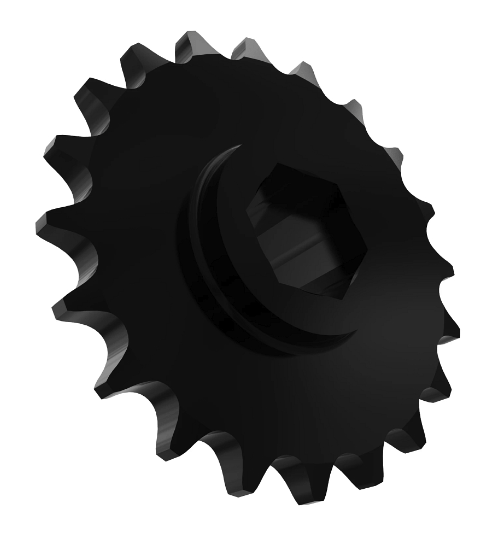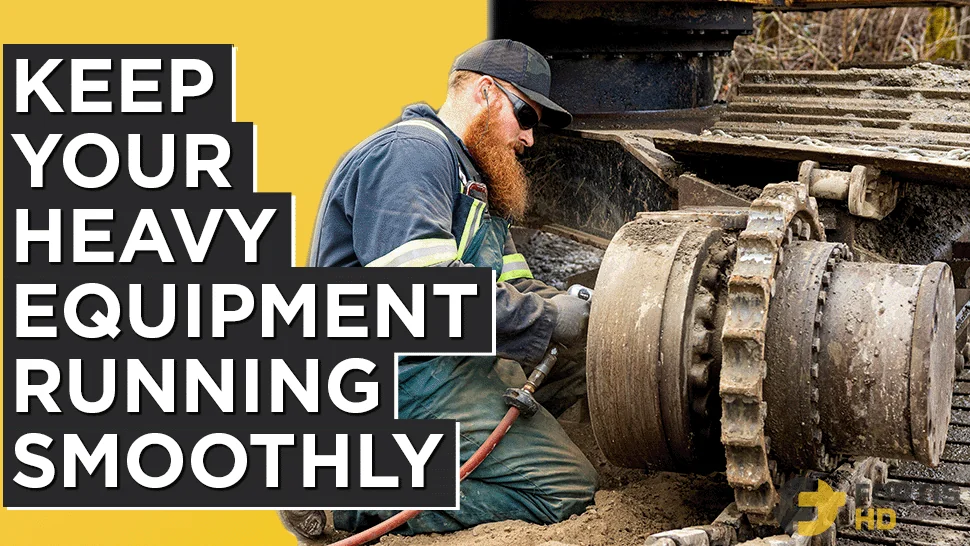The undercarriage is a series of components assembled into a complex mechanism to support and move a construction machine.
In heavy machinery, wheeled and tracked undercarriages are responsible for:
- Moving the heavy equipment around different types of uneven terrain.
- Providing a stable platform to lift and carry objects.
- Distribute the machine’s weight evenly so it doesn’t sink into soft ground.
- Protects the heavy equipment from harsh conditions to keep it operating safely and efficiently.
Without undercarriage, there won´t be excavators, wheel loaders, or compact track loaders.
And without heavy machinery, the construction industry won’t be able to function because they perform various tasks humans can´t, improving safety and increasing efficiency.
Let’s dive into the importance of some of the undercarriage components, how they work together, the impact of proper maintenance on the longevity of the whole machine, and the value of aftermarket parts.
Table of Content
Understanding the Undercarriage Parts
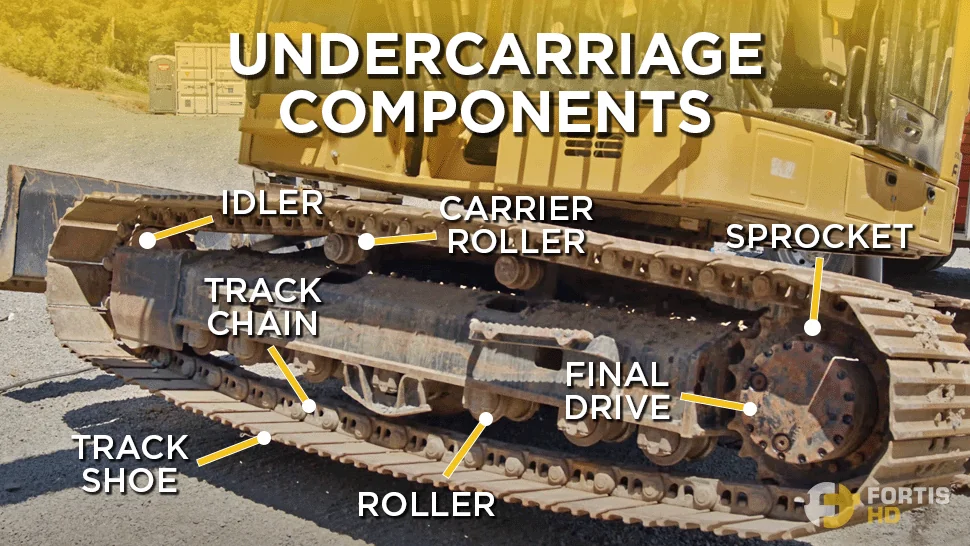
In this section, we’ll focus on dozers to understand the parts of an undercarriage. Dozers can have a final drive or a high drive undercarriage design.
For dozers with a final drive undercarriage design, you’ll have track chains, track shoes, upper and bottom rollers, a front idler, a sprocket, a final drive, and a spring recoil assembly.
The only difference for dozers with a high-drive undercarriage design will be two idlers instead of one, the front idler and the rear one.
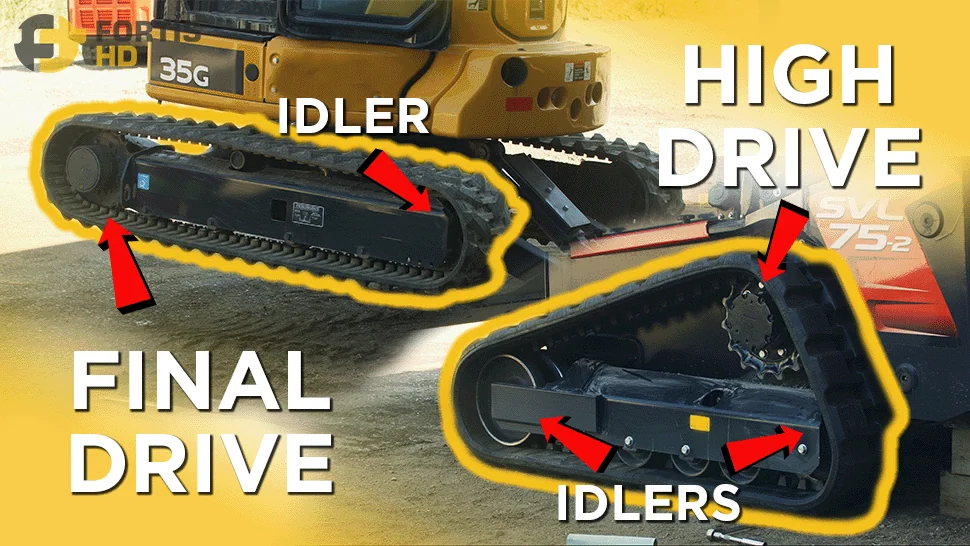
Overall, here are the functions of the main components of a tracked undercarriage:
Track chains
It’s an interlocking link system connecting the sprocket, rollers, and idlers. The track links articulate, allowing the track chain to conform to the terrain.
Track shoes
Also known as grouser shoes, are attached to the track links and in contact with the ground. The track shoes protect the track links from wear and tear while providing traction to the heavy equipment.
Track shoes come in durable materials like steel and rubber.
Rollers
Keep the track aligned and appropriately taut and shaped.
Bottom rollers carry the machine’s weight, maintain clearance off the ground and ensure it moves over the track.
Top rollers or carrier rollers prevent the track from sagging.
Idlers
The idlers keep the track on its path. Set how tight or loose the track is in combination with the track adjuster.
Sprocket
It’s a large cogwheel with teeth that interacts with the track, turning it to move the machine.
Other parts, like final drives, bushings, pins, and the track spring assembly, are as important as those we mentioned. Check out our comprehensive article about undercarriage parts to learn about them.
We mentioned undercarriages are complex mechanisms. Let’s break down how its parts work as a whole.

Looking for idlers, rollers, or sprockets? Visit our high-quality aftermarket undercarriage parts section to find the replacement for your heavy equipment.
Mechanics of Undercarriage Parts
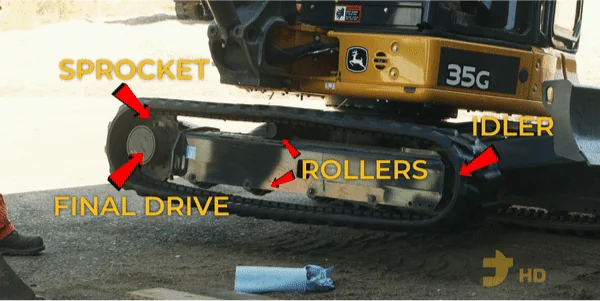
Continuing with our dozer, when the operator moves the controls in the cabin, hydraulic fluid is pumped to the final drive. This fluid causes the gears in the final drive to turn, which turns the sprocket.
The teeth of the sprocket engage with the bushings of the track chain to rotate the whole track (track chain + track shoes).
The idlers and the bottom rollers keep the track aligned, while the upper roll keeps the track from sagging.
The tracks need to be appropriately tensioned depending on the soil conditions. Here’s where the track adjuster comes into play.
The track adjuster uses a hydraulic system to maintain tension on the tracks. You pump grease into the hydraulic cylinder, and it pushes the front idler forward, tensioning the track. You can loosen the track by relieving grease from the hydraulic cylinder, which brings the front idler back.
There are differences in the undercarriage mechanism for different heavy equipment due to the size, job purpose, and whether it moves on tracks or wheels.
Understanding Different Types of Undercarriages
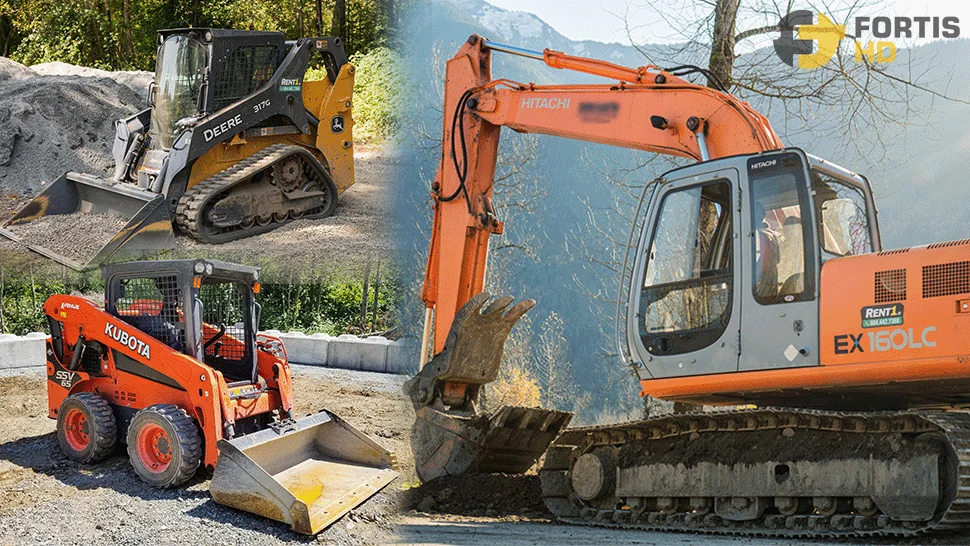
In this section, we’ll compare the undercarriages of excavators, compact track loaders, and skid steers.
Let’s start comparing tracked undercarriages and then compare those against wheeled undercarriages.
Excavators Undercarriage vs Compact Track Loaders Undercarriage
We use excavators typically for heavy-duty tasks, such as digging and lifting, while CTLs are for lighter-duty tasks, such as loading and transporting materials. That is why the undercarriages of excavators and CTLs have different features.
The excavators’ undercarriages have wide bases for stability and steel tracks for durability. You can bolt rubber pads onto the steel tracks to prevent damaging concrete, pavement, or sensitive surfaces.
Depending on the terrain, excavator undercarriages can have wide or narrow tracks.
For soft or uneven terrain, wide tracks spread the weight evenly, reducing ground pressure to prevent the machine from sinking and providing stability. For rocky terrain, narrow tracks increase ground pressure for extra traction.
In contrast, compact track loaders undercarriages have a narrower base for maneuverability rather than stability because we use them in tight spaces.
They have rubber tracks to provide a smooth ride and low ground pressure.
In this video, William explains the difference between track widths and which works best for the type of surface your vehicle will travel over.
Tracked Undercarriages vs Wheeled Undercarriages
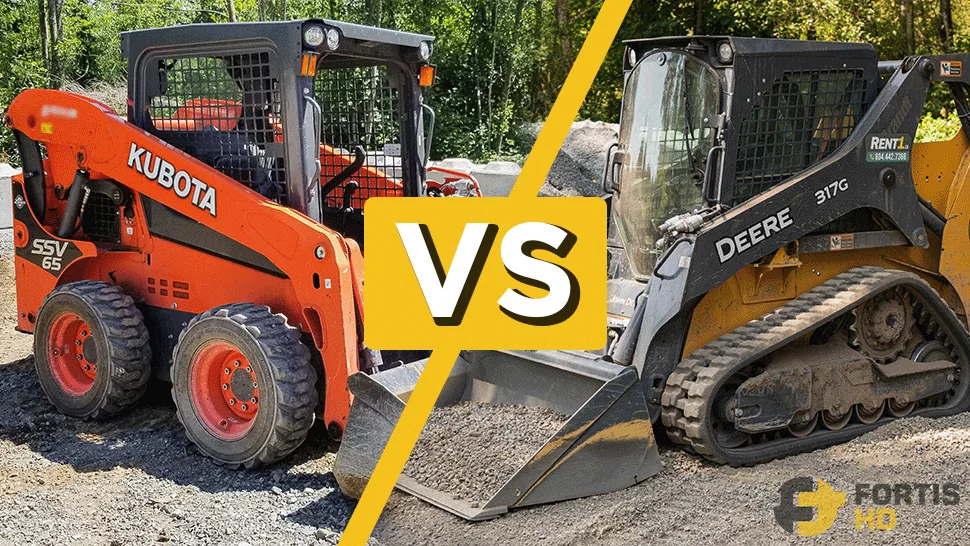
Tracked machines work better on rough terrain because they provide more ground pressure than machines with tires.
Tracks deliver traction in areas where you can tear up the ground. Also, their lower center of gravity delivers stability when working on unstable ground and slopes.
On the contrary, wheeled equipment provides better traction and maneuverability on smooth, flat surfaces with a slight incline or large job sites requiring long travel distances.
Wheeled machines are lightweight and work well when the ground impact is not a conditional factor.
Despite their differences, there is one thing tracked and wheeled undercarriages have in common: they need maintenance.
Importance of Regular Maintenance
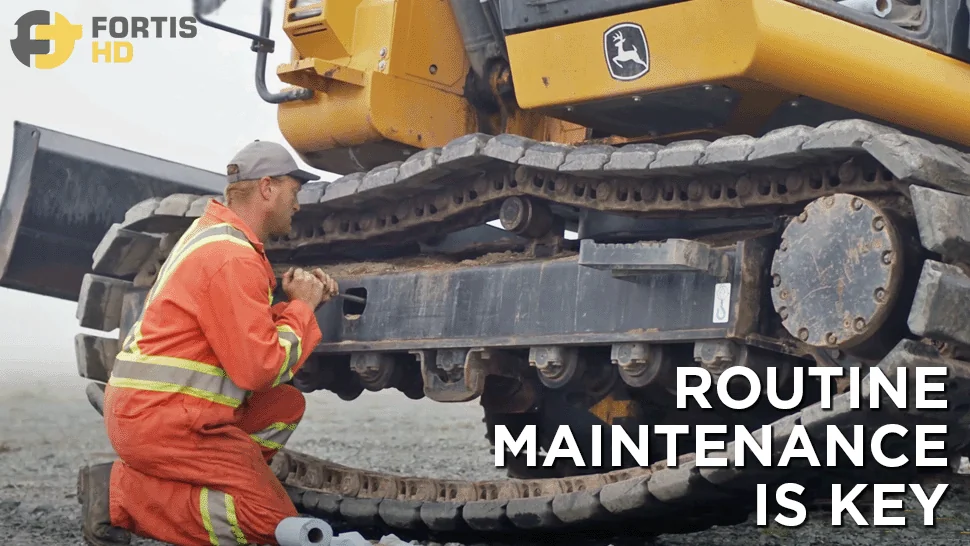
We’ll focus on a proactive maintenance approach to ensure a trouble-free operation and long life for your undercarriage. Those approaches are preventive and predictive maintenance.
Preventive maintenance involves scheduling regular inspections and services like cleaning and lubrication to prevent equipment failures. Predictive maintenance uses data and analysis to monitor and identify potential problems before failure occurs.
So, because both practices prevent failures, you’ll reduce the risk of unplanned downtime since your equipment is less likely to fail.
Your machine will work at peak performance for a longer lifespan, increasing productivity and business profits.
What if your undercarriage is beyond its lifespan or, for any given reason, it’s not working anymore or is badly damaged? You can replace an entire undercarriage.
A complete and new undercarriage assembly is the easiest but most expensive option. You could also buy individual parts and assemble the undercarriage, which is cheaper but requires more time and expertise.
No matter the option, ensuring the replacement undercarriage is compatible with your machine is essential. You should also get high-quality parts and double-check the installation process.
The Life and Durability of Undercarriages
The lifespan of a piece of equipment is the amount of time (in years or hours) you can expect it to work efficiently to generate profits. Eventually, the cost of fixing a machine exceeds its value and productivity, so you’ll need to get a new one.
Lifespan varies on different types of equipment. The average lifetime of a dozer undercarriage is 4,000 hours of use, while an excavator undercarriage can last an average of 8,000 operational hours. When an undercarriage reaches its corresponding lifespan hours, most components have seen some sort of repair or replacement.
The main factor affecting the average lifespan of undercarriages is the job site. Rough and uneven terrains, abrasive or corrosive construction sites, or ones with lots of debris and places with heavy moist will toll your machine.
Even something as durable as steel tracks will wear out faster under the conditions above. A rocky terrain will cause abrasion. Job sites with chemicals, moisture, or salty water corrode the tracks, while uneven terrains can cause cracks or damage.

Need to switch from steel to rubber? Go to aftermarket rubber tracks section to find the one that fits your heavy machinery and save money—all in one place.
Job site conditions are inevitable. Yet, there are things you can do to prolong the life of your undercarriage.
Clean your undercarriage to prevent buildup, and regularly inspect the undercarriage. Look out for wear, tear, leakages, and adjustments on the following components:
- Drive motor.
- Drive sprockets.
- Main idlers and rollers.
- Rock guards — if equipped.
- Track bolts.
- Track shoes.
- Track chains.
- Track tension.
Read the operator’s manual to know your heavy equipment limitations. Get proper training or ensure the operator has training and follows best practices. To reduce wear on your undercarriage:
- Avoid sharp turns.
- Minimize time on slopes, or if you can’t, set the drive motor in the correct position to reduce track wear.
- Select the right grouser and shoe width.
- Minimize driving in reverse because tracks in reverse lead to premature wear and tear of the sprocket.

If you find maintenance tasks and sticking to operation best practices overwhelming, leave both in the hands of Rent1USA Our low-hour, thoroughly maintained machines are available for rent, and they also have certified operators for hire.
Another inevitable factor affecting the undercarriage’s lifespan is time. OEM parts may not be available for old machines. Here’s where aftermarket parts come in.
The Role of Aftermarket Undercarriage Parts
While OEMs make an exact copy of your undercarriage parts, third-party manufacturers produce generic parts. The term generic is often associated with low quality, but that’s not true with many heavy equipment aftermarket parts.
Over the years, aftermarket parts have gained popularity over OEM for several reasons:
- Better quality.
- Wide variety.
- Availability.
- Less price.
- Fast delivery.
- Warranty.
Aftermarket parts are manufactured with excellent designs and materials, matching or exceeding OEM quality.
In this video, Cameron shows a controlled test of how the SHIELDS® polycarbonate window stacks up against regular OEM glass.
With so many existing manufacturers and suppliers, variety and availability have increased, but even better, aftermarket parts are affordable because of the competition.
With competition not only comes better prices but also better customer service.
Suppliers can offer fast shipping options with popular delivery partners so you get your replacement parts as soon as possible, reducing downtimes for your business. Reputable suppliers even offer excellent warranties for your purchase and the possibility to hire experienced service technicians.

Visit Tekamo HD to hire a certified heavy equipment technician to quickly repair and service your construction equipment on-site.
At Fortis HD, we’re proud to be among those leading suppliers providing aftermarket parts at great prices and with the highest quality standards for our customers. We got you covered for all your undercarriage needs.
Even if you find a leading supplier, choosing an aftermarket part is slightly more complex than an OEM. Read on to learn how to choose the correct replacement part you need.
Choosing the Right Undercarriage Parts for Your Equipment
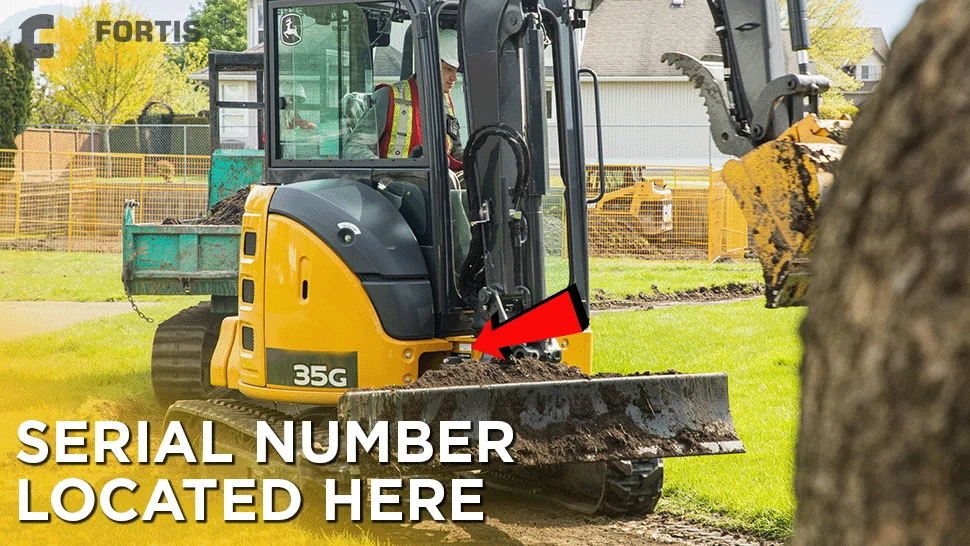
Aftermarket parts are available for more makes, models, and years than OEM alternatives, and quality varies by manufacturer. Whether your construction machine is John Deere, Caterpillar, Volvo, etc., you must narrow your search.
Before calling your favorite supplier, ensure you have the following information to ask for availability and ensure fitment:
- Manufacturer part number.
- The make and model of your machine.
- Machine’s serial number.
The manufacturer part number (MPN) is the most vital information to find the correct replacement part for your construction equipment quickly. The number should be on a stamp or identification plate.
Next, take note of your equipment’s make and model, like the Hitachi 150 excavator or Kubota SVL-75 Skid Steer.
Third and last, the machine’s serial number is an alternative way to search for a part if you cannot locate the MPN. The serial number is on the identification plate, typically on the side of the machine near the cab.
You can also check the manuals to find the MPN, your machine’s model, and serial number.
In A Nutshell
Undercarriage parts are essential for the maintenance and longevity of heavy equipment.
Regular inspection and simple tasks like cleaning and lubrication will extend the life of your undercarriage, and when the time to replace worn parts comes, consider aftermarket parts.
Excellent suppliers offer an extensive range of high-quality aftermarket parts with fast delivery services, even for old machine models for which OEMs are no longer an option.
Share this article with those still skeptical about aftermarket parts that have already given up on their old mini excavator, wheel loader, or compact track loader.


